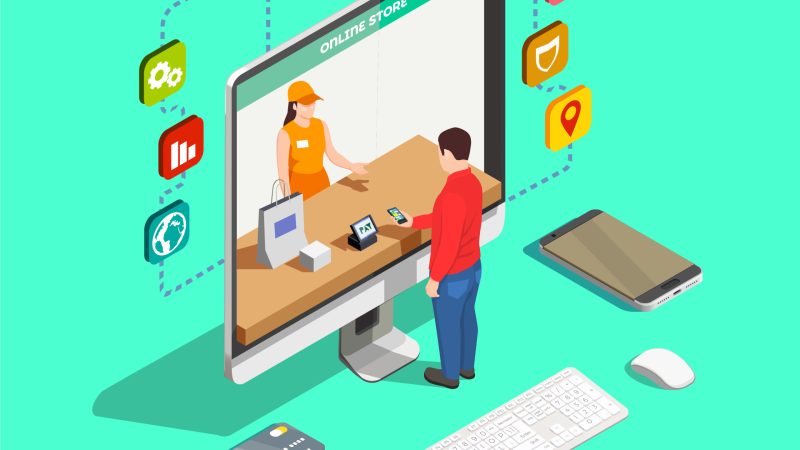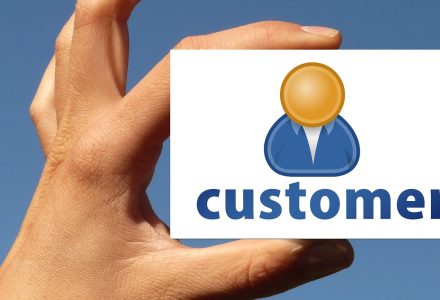Why are we releasing this? Who is this for? Why is this important?
The days of paying thousands and thousands of dollars in blind TV advertising are over. The new way to advertise is through digital marketing. Today’s businesses can spend as little as $10 a day and reach hundreds or even thousands more customers than they did before. However, in 2020, it’s going to be even more important that businesses connect to new and old customers through digital marketing. Much of growth marketing, conversion optimization, and online advertising practices come down to understanding your customer’s problems and answering them with the best solutions.
This digital marketing guide teaches you how to understand your customers better, different marketing methods, and how to budget for marketing and online customer acquisition. Also, we take it a step further with a guide to conversion rate optimization and data analysis to beat out your competitors.
Step 1: Learn What Makes YOUR Customers Want to Buy Online
So how do you get your customers from “just looking” to “I want to buy now.” Moving customers through the sales funnel online requires a seamless user experience with customer touchpoints that guide them to a destination where they can buy easily.
However, research has also found that most businesses fail because there is no market need for their products. The key is to create that need by showing how your products or services solve a problem for the customer.
The first part to making customers want to buy from you is understanding your audience through market research. Once you understand how your customers think, then you can figure out their problems, needs, and motivations.
Before you start building your brand, you should ask these questions:
Is There a Market for Your Product?
What customers are you building your brand for? Perhaps you have developed a new clothing line based on trends you spotted on Instagram, or maybe you created an app that tracks weight in a new way. How do you know that users will want to purchase your product or service? How is your product different than competitors? By understanding the market and industry, you gain a better understanding of your customers and what they want, too.
What Value Will Your Products or Services Provide?
Before you get into branding and marketing, you should define your products and their target customers. For instance, you may want to open a meal subscription service for vegans. How much will each meal cost for the customer? How does this compare to making food on their own without your service? What are you inherently providing that they can’t get anywhere else? Once you understand the value of your services and products, you also see what customers would be attracted to purchase your offering.
What Problems Will Your Products and Services Solve?
Finally, you have to think about what your customers are looking to fix when they seek out services or products like yours. Perhaps they are looking for new recipes and meals to cook with their significant other. Maybe they don’t have time to go to the grocery store. Both of these customers may be interested in a meal subscription service.
There are some methods to research to figure out the answers to these questions:
Market Research
Most market research can be done on your own unless you want to hire an agency or use an expensive third-party tool. We have put together a few methods below that require little to no financial investment.
- Compile a list of keywords related to your products and services, then search these in Google and Bing. Third-party tools like WordStream, Google Ads, SEMRush, and WordTracker may help with keywords to track and follow as well as keywords that your competitors rank for.
- Find industry-related pages like forums, subreddits, and other niche community sites to see what customers are looking for and how they feel about certain brands.
- Use brand mention and tracking tools such as Social Mention or SocialReport.com to track down keywords on social media.
- Create Twitter lists to track certain hashtags and followers related to your products. Follow hashtags related to your products and brand on Instagram.
- Join Facebook Groups related to your products or services, read through community posts and reviews.
- Check out reviews on Amazon, Google, Yelp, TripAdvisor, and other niche-related review sites to see what customers think. You should pay close attention to 1 and 5 star reviews.
3 Methods for Qualitative Research
You can gather important information about your market through qualitative research. This method answers the why and how of a customer’s approach to shopping for products and services. This research is conducted through observation and unstructured techniques, such as the following:
Individual Interviews
You can conduct interviews through Skype, over the phone, or in person. The idea is to talk to your ideal user group or existing customers. You can ask a series of questions and learn about what motivates someone to buy a product or service like your offering.
Some questions you might ask include:
- What frustrates you regarding [your industry/product/service/other topic]?
- If I could grant you any wish and give you anything you want, what do you most desire?
- What keeps you up at night?
- Did you ever buy a [your type of product] before?
- If yes, what motivated you to buy it?
Focus Groups
These are studies conducted in research. You bring a variety of people together in a safe and comfortable environment where users can talk openly about feelings, thoughts, and motivations around your product.
You get to observe customers verbally and non-verbally engage around your product or service. You can use this method to test out your product, explore more concepts around your product, evaluate advertising imagery and messaging, and explore new packaging.
Test Shoppers
This type of research is very personal, but you can hire personal shoppers or consumers to shop for your products in-store and online. Personal shoppers have been around forever, and there are a variety of companies you can use to hire anonymous shoppers who will evaluate your entire experience. You may also want to do this with online shoppers through product testing companies.
Conduct Quantitative Research
Qualitative research explores perceptions and tries to understand at an in-depth level what customers want. Quantitative research relies on statistical data by collecting a bunch of answers and assessing the data. This research answers the where, what, when, and who when it comes to decision making. If you don’t know the demographics of your audience, then these are the best methods to digging into your audience a bit more.
User Surveys
There are a variety of user survey tools online. You can use a service to poll specific audiences and collect the data. You can use these opinions to get a better understanding of what to do with your product and how to market it to a wide range of consumers. Surveys ask a myriad of questions and try to draw out correlational research. This helps you understand your user’s interests as well as friction points to using your products or services.
Testing Segments
You can set up audience segments based on a few demographics you already know, such as gender, age, income, and location. Through Facebook audience targeting, you can set up multiple audience segments based on these demographics and interests to discover what audiences really like about your products. However, this is a more expensive way to test out different audiences.
Research is Key to Creating the Best Digital Marketing Strategy
Once you know your audience and what they want, it’s easier to create advertisements, promotional offers, and set up targeting through online advertising platforms. For example, once you know that your meal subscription audience is vegan, so your market research may unveil that they also like brands that do not conduct animal testing. This can help you target customers with the right interests on platforms like Google Ads and Facebook.
Step 2: How to Use Inbound Marketing in 2020
Research shows that only 3 percent of customers are ready to buy right now. The 97 percent fall into the remaining categories:
- Customers are unaware of the problem (majority)
- Customers are aware of the problem but do not actively look to solve the problem
- Customers are actively researching and gathering information to solve the issue
In order to get online customers flocking to your brand, you need to become a definitive resource and authority in your niche. In essence, brands don’t need to hard-sell customers to ensure revenue if the company’s website becomes an educational and insightful center for customers. By nurturing these customers through expert information and guidance, you give them a safe, free way to research while also suggesting your products that can solve the problem quickly.
This is the key to inbound marketing strategies.
Inbound marketing techniques are key to nurturing customers and selling products under the umbrella of guidance and information. These strategic products and services create value for your customers. You can also use growth marketing strategies such as remarketing to your current customers by uploading your customer email and phone number lists to Google Ads or Facebook Ads. You can then display your free content directly to previous customers as they browse around the web.
What’s the result? Your customers see you as a knowledge base rather than a seller trying to win them over.
You probably have seen some of these inbound marketing techniques already while on social media or just browsing the web looking for certain products. The most common types of inbound marketing include:
- Free ebooks and guides
- Webinars
- Tutorial videos
- Templates
- Free reports
- Free white papers
These products and services answer questions and problems that your customers have. Based on the research that you did in step one, you may have a variety of resources that you can use to create value for your customers. Inbound techniques often suggest products that users can buy to get ahead or solve the problem faster. This is where inbound marketing strategies shine the most.
How Do You Nurture and Create Value Without Selling?
All brands online need to set up customer touchpoints. These are moments when you cross paths with your customer and provide some value to them.
For example, let’s say you own a company that sells new retention software for HR departments. In this B2B example, you may create value for your customers by offering tutorials, guides, ebooks, and webinars about employee retention and HR topics. You become a knowledge base that helps your customers understand problems and how to solve them.
As a brand online, you have to understand where your customers are and use your inbound marketing offers as a way to guide your customers towards your brand. In our B2B example, you may want to define a customer journey from beginning to end, as follows:
Stage 1: Discovery
Your customer is researching the problem. They search across search engines and social media networks for information. During their search, your free ebook offer pops up in results or through paid online advertising, such as display ads or text ads in search. They click around and find out more information about your offers, which leads them to a squeeze page.
Through growth marketing, you can also find areas to test new customer segments. You can also design marketing experiments to optimize what you are doing, and you can analyze these results to help with future campaigns.
Stage 2: Acquiring Customer
At this point, you want a potential customer to sign up with no obligation to pay. This means that when they sign up, they receive the free offer such as an ebook or webinar access, and all they have to provide is their name and email address. Typically, you would have two to four fields in the sign-up form on the squeeze page. Once they enter the information, they can quickly download or acquire the resource.
This resource should impart knowledge and insights that only you as an industry insider can provide. At the same time, you can suggest your products and services without being too blatant. The goal is to show that you are an authority and can be counted on as a valuable resource. Once customers have this trust, they will likely buy from you.
Stage 3: Adding Touchpoints
Through social media profile pages, email marketing, and guest blogs, you can further nudge your customer along the journey. Social media and email market are two of the best ways to follow-up with your customers, and they’re mostly free. You can add more value by creating more webinars, tutorial videos, and other resources on your social media pages.
For example, you may create a social media series where you provide exclusive content to your followers. Once they sign up for webinars, you can also create email marketing nurture series that provides more information and value. As your followers seek out more information, you can also link to products. Each email and social media post is an opportunity for a transaction.
Influencer marketing and content marketing are two other options to explore. You can provide your products to important social media influencers within your market to get more exposure. On your website, you can add videos, tutorials, tips, and other content, but brands should also partner with other blogs to share content on relevant websites to their audiences. For example, you may find a blogger with 50,000 visits a month that appeals to your market. You can guest post on this blog for more exposure.
Press releases are another touchpoint you can add so that your content shows up in timely, news-related searches. Charity events, new product launches, changes in leadership, and other noteworthy events can be distributed through services like PRWeb.
Stage 4: Perfect Your Add to Cart and Checkout Experience
This should be the easiest part of a customer’s journey. When a customer decides to buy from you, they know that they will need to provide payment information and go through a checkout process. It’s up to you to make this as smooth as possible. The key is to not require too much information while getting everything you need to 1) complete the payment, 2) ship the product to the right location, and 3) follow up with the customer.
The follow-up is key to the success of the transaction and future business. You want to be able to send an email with an order confirmation, and in the future, you may want to suggest other products and services.
Stage 5: How to Build Up Return Customers
There is no final stage in the process. Hopefully, you stay a part of the customer’s journey by continuing to offer great products that resonate with them and inspire them to purchase. In order to do this, you have to have a way to follow-up with your customers. This is typically done through an email flow series. You send more educational information and entertainment, while also slipping in promotional offers. The goal is to keep your customers happy with information while still reminding of your products and services.
Another way to do this is through a member loyalty program. These programs provide rewards and incentives for members buying your products or participating in events. You can offer points to collect for free products. For example, Pizza Hut Rewards offers point for every purchase that can be collected and used to buy Pizza Hut items. You may also offer special member-only events and discounts.
Remarketing or retargeting is another technique where you track your visitors around the web and invite them to come back to the site through display and text ads. You can run remarketing campaigns on Facebook and Google to reach most of your audience. This technique requires that you install a remarketing pixel or Facebook pixel to track visits and remarket to those visitors. However, you can also upload your customer email and phone number lists to Google and Facebook. However, Google remarketing with email lists is better done through Gmail remarketing ads.
Remarketing campaigns go hand in hand with a proper incentive and setting limits on how long customers are followed on the web. If your customers do not bite within 3 days, you can still re-engage them with a free offer or an even bigger discount through your email marketing campaigns.
Step 3: How to Use Paid Online Advertising in 2020
If inbound marketing is the free, educational way to bring in customers, online advertising is the outbound marketing strategy. Buying ads online gives you more opportunities to reach customers as you pay for space to show ads on a variety of channels. The channels that you pick will depend on your audience and budget.
Brands need to build a highly defensible advertising system by diversifying their revenue channels and creating an irresistible offer. The best way to do this is to start small with one or two channels that you can set up and manage perfectly. Some ideas to start with include:
- Facebook Ads: This is a low to high budget option, depending on how many people you want to reach per day. You can advertise for as little as $5 a day on Facebook. You can purchase ad space on Facebook with a pretty small budget and define a target audience by age, gender, income, interests, website activity, customer email lists, and so much more. With 3.5 billion users, it’s one of the best ad networks to use. It also hooks right into Instagram ads.
- Google Ads: There are budget-friendly options on Google, and you can get started for as little as $5 a day. Formerly known as Google AdWords, you can set up text ads that appear in search or display ads that appear on websites a part of Google’s display network. You can also target specific audiences using tools in Google Ads or adding remarketing lists based on customer emails or phone numbers.
- Instagram Ads: Instagram ads convert based on impressions and clicks. It can be a little bit more costly to get a conversion on this app. Facebook owns Instagram, and so you can advertise on this social network just by signing up for Facebook Ads.
- YouTube Video Ads: Video conversions are a little more difficult and costly as you need resources to create a video advertisement, too. YouTube is part of Google’s ad network. You can create short videos that display to users who watch content related to your products or by remarketing based on their website activity or email lists.
- LinkedIn Advertising: It’s a bit more costly to get conversions since you are advertising to businesses. You can expect a higher cost per lead on this network. Want B2B advertising? LinkedIn is one of the best networks to advertise directly to other businesses or clients.
- Twitter Ads: While it’s not as profitable as Facebook ads, Twitter has been improving its ad network and offers a variety of ways to target customers online.
- Pinterest Ads: Do you have a lifestyle or beauty brand? Pinterest users love building boards filled with pictures and links to products they want to buy that match what they are looking for. Pinterest ads display right alongside user content in an image-based platform.
Skip to Step 5 to learn more about marketing budgets and how much you can spend to acquire customers.
Step 4: How to Build Trust with Content
There are a few ways to help your customers see your value without you telling them. This is the single most important factor in creating better relationships with customers online. To show your value, you have to stop making it about you and saying that you are the best. Instead, show your value through other customers and your content.
When customers create user-generated content such as videos, testimonials, reviews, blogs, and social media posts, your brand reaps the benefits. Their friends and followers see this content as a badge of trust that makes them want to learn more about your products and services.
Some examples of this content include:
- Video testimonials or product tutorials from your customers
- Positive customer reviews about your products
- Shares and mentions on social media
- 4- and 5-star ratings
- Long reviews from bloggers in the industry
- Recommendations on Reddit, forums, Facebook Groups, LinkedIn Groups, and other niche communities
In addition, your brand also needs to create content that is worth sharing. If you don’t already have a blog, this is the single greatest thing you can do for your content and search engine optimization (SEO) strategies.
Your content marketing plan should include:
- Social media: Facebook, Instagram, and Twitter are the big three when it comes to social media, but if your audience is likely to use Pinterest, LinkedIn, Snapchat, or another network, you should cater to where your audience is bound to share your posts. Marketing experts also agree that it’s best to focus on one or two channels if you do not have a full social media team.
- Branded blog: This is where you can build up your expertise and authority on different topics related to your industry and customers. Perhaps you tackle a different problem every week through a guided tutorial.
- YouTube channel: Your video content can help you sell more than anything, and you can embed these videos into your blog. Product demos, tutorials, recorded podcasts or interviews, behind-the-scenes, and expert tips are some ways that brands can earn more traffic through video marketing.
- SEO: This is the most cost-friendly option financially, but it requires a lot of time. All websites should have copy that is optimized with keywords. SEO content is strategically structured around product, brand, and market keywords. These pages link out to blog articles, products, and services that are relevant to the major keyword you want to rank in search engines.
One more tip: Once your customers start providing user-generated content, you should highlight it on your website, social media pages, and other marketing channels to show love back to the customers. This is another great way to show loyalty and gratitude for their business.
Step 5: Marketing Budgets & How Much Can You Spend to Acquire Customers
Your budget dictates what type of marketing strategy is best for you. When thinking about how much you are willing to spend, you most likely want to start with cost per acquisition or CPA. There are actually three ways to think about this number. The goal is to consider how much it takes to acquire a customer while also maintaining a healthy profit or return-on-investment (ROI).
CPA vs CPL vs Conversion Cost
Here is a breakdown of how to calculate the value of your customers, leads, and conversions, depending on what you want to budget for.
Cost Per Acquisition or CPA
This figure represents how much money it takes to acquire a customer by your brand. This does not mean that you sold anything or gained any revenue. It simply means what did it take to get a customer’s email address or phone number. Typically, this involves a email subscription or marketing sign-up campaign with a form that the customer fills out.
If you spend $100 on a campaign and get 50 sign-ups, then your CPA is $2 per customer. When planning your budget across different marketing channels such as Google Ads, Facebook Ads, or other display networks, you want to choose the channels that have the lowest CPA.
Cost per Lead or CPL
CPA and CPL are often used interchangeably, but leads often require more from the customer at sign-up than a typical email subscription. For example, you may want to qualify leads through specific targeting such as income, FICO score, or house ownership. You may also want to include several fields on your forms to ensure that they meet other criteria, such as email address, phone number, home address, and other preferences.
In essence, CPL may be higher than CPA simply because you need more information from the lead in some cases. For example, you run a mortgage lending business and want to find qualified home buyers. You set up a marketing campaign with a free home buying guide that requires the user give you their name, email address, phone number, and income. If you spend $1,000 on this campaign and get 200 qualified home buyers to sign up, then your CPL is $5.
Cost per Conversion or Conversion Cost
Since CPC typically refers to cost-per-click, you typically see “conversion cost” or cost-per-conversion. It may also be called cost per transaction. Essentially, this number represents the amount of money it takes to get one purchase. Conversions are different than a sign-up or a lead because it requires a sale. While marketers sometimes use cost-per-conversion interchangeably with CPL or CPA, it’s technically not a true conversion, which must have revenue attached.
For example, you spend $10,000 on a new headphone launch campaign. Each headphones cost $50, and by the end of the campaign, you sell 300 headphones. Your cost-per-conversion is $33, which means that you make a profit of $17 for every headphone that you sell. Is that a good revenue goal? You can use something called ROAS to take it a step further.
Return on Advertising Spend or ROAS
Are you earning enough per sale to cover your total costs? Marketing costs typically include your campaign budget, but you also should factor in any design services, agency fees, photography costs, and other expenses that went into developing the marketing campaign.
This is key to figuring out how well you are doing when it comes to marketing. If you know that you need to make $10 for every $1 spent to break even, then your bare minimum ROAS is 10.0 or 10:1. As a simple marketing cost example, if you spend $100 to advertise a product that a customer buys for $200, then you earned a $100 profit or 2.0 ROAS. In this example, the customer covers your marketing cost and you earn additional ROI.
A 10:1 ROAS is excellent but quite high for most businesses. To keep your ROAS high, you need to plan your marketing budgets carefully.
Common Examples of Each Type:
- Cost per acquisition (CPA): You have a sign-up campaign that doesn’t require any purchase. Once a customer fills out your form, they go into your customer relationship management (CRM) database, and you can advertise products to them via email or social media.
- Cost per lead (CPL): Like CPA, cost per lead focuses on getting customers who are highly likely to buy something from you, but you want to acquire the lead first. These forms typically ask for a phone number in addition to email addresses. A “highly qualified lead” may cost more than a junk lead purchased from email list farms. By targeting audiences on Facebook with requirements for income, location, and even FICO scores, you can get better lists of high quality and hot leads.
- Cost per conversion or conversion cost: Some consider a sign-up or lead to be a conversion, but to businesses, a conversion means revenue was acquired. Conversion cost is simply how many marketing dollars did it take to get a customer to purchase something. For example, it cost $100 in marketing dollars to sell a $50 gadget, so it was a $100 cost per conversion.
Lastly, customer lifetime value is another essential way to consider the value of a single customer. What methods do you have in place to continuously provide value to your customers and get repeat business? One purchase may only be $50, but if you have a subscription service, that could mean $50 per month or $50 per year. Your customers may also be highly engaged on social media if you provide them with the right touchpoints that lead them to share and promote brand ambassadorship.
It’s important to evaluate channels based on your budget and how much leads or conversions will cost. Some networks like Facebook allow you to specify that you want to optimize your budget for conversions. However, these campaigns still charge per impression or CPM (cost per 1,000 impressions).
Rule of ROI Thumb
You can test out channels against each other with small budgets, adding more to campaigns as they gain momentum. You want to achieve a minimum of 50 percent return on investment (ROI), then roll any additional profits into experimenting with a new audience segment or another advertising channel.
Bonus! CRO & Data: How To Stay Light Years Ahead Of Your Competition
Digital marketing is only as good as knowing where your traffic came from and how much revenue is generated. In order to track this information, you need to understand what metrics you want to know and how to track them. In addition, conversion rate optimization (CRO) can help you design a better customer journey and overall user experience that consistently converts users to customers.
Here is a quick cheat sheet to metrics, analytics, and data:
- Set Up Google Analytics: This helps you track website visits, social media referrals, AdWords conversions, top pages, and revenue. You can set up funnels and goals within this platform, too.
- Facebook Conversion Pixel: You’ll need to set this up before you start a Facebook campaign. This pixel tracks a Facebook user’s journey from your ad to conversion.
- SEMRush: This is an all-in-one smart marketing tool that will help you track SEO and ad campaigns. You can gain insights on your campaign activity, as well as track your rank in search engines and compare against competitors.
- SocialReport.com and many other social reporting tools offer you deep metrics for social media engagement, mentions, shares, comments, and moderation tools.
Conversion rate optimization is about increasing the number of customers who take a desired action based on your business goals. Perhaps you want more customers to sign up for your email marketing, so you design a pop-up on your home page to appear every time a user navigates to the [x]. The pop-up appears with a last-minute offer and asks them to provide their email before they go.
Some methods to improve your CRO include:
- Set up Google Analytics and add goals
- Setting up and tracking funnels and sales data within Data Studio on Google Marketing Platform
- Using heatmaps, clickmaps, and scrollmaps to figure out where customers are dropping off
- User experience testing through third-party user survey and scoring
- Split test or A/B test different ad segments, campaigns, and landing pages






